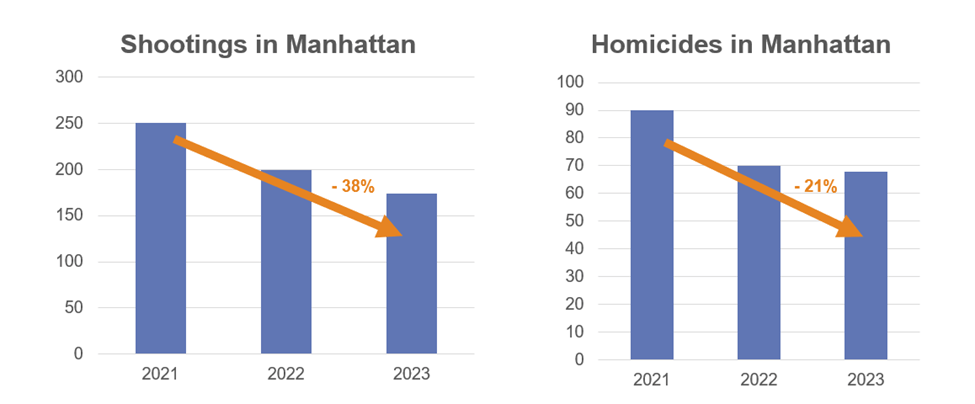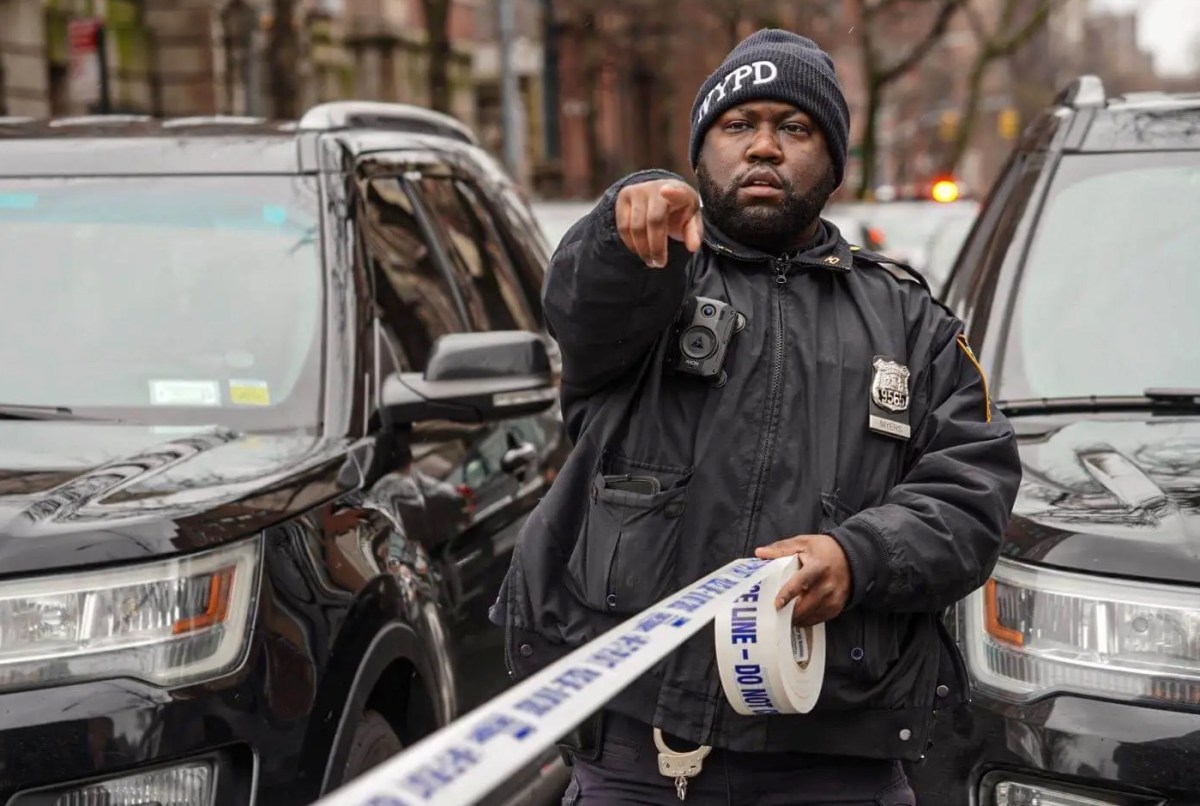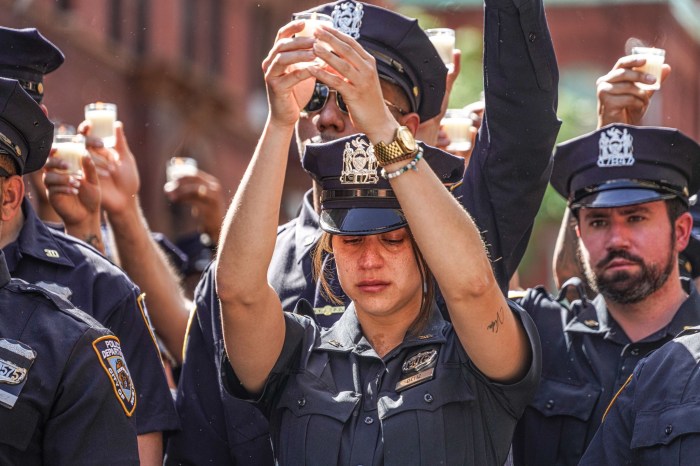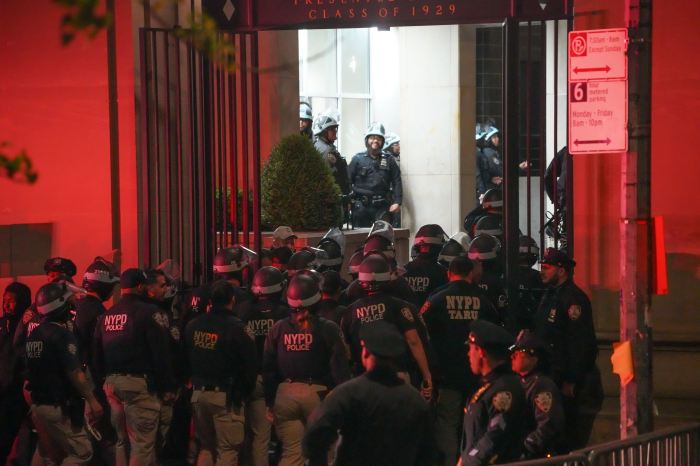Police and prosecutors in Manhattan are working hard to change the crime narrative in the borough, and their efforts seem to be bearing fruit, according to crime data provided to amNewYork Metro.
Data provided by the NYPD and the Manhattan District Attorney’s office reveals a 5% year-to-date decrease in major index crime during the first three months of 2024, as compared to last year. Those index crimes — murder, rape, robbery, felony assault, grand larceny, burglary, grand larceny auto — are also down 8% from two years ago. Those numbers outpaced the rest of the city; on Wednesday, the NYPD reported a 5% year-over-year drop in major index crime during the first quarter.
Manhattan has also seen a whopping 43% decrease in shootings during the first quarter of 2024 from the previous year, and a 54% drop in such incidents from two years prior. Homicides are also down big this year, with law enforcement reporting an 11% drop from the first quarter of 2023, and a 16% decline from two years ago.
The secret to Manhattan’s success, according to Manhattan District Attorney Alvin Bragg, has been a cooperative effort with the NYPD in combating crime around the borough.
““I am proud of the significant progress we have made with the NYPD in driving down nearly all forms of violent crime, including shootings and homicides, throughout Manhattan,” Bragg said in a statement to amNewYork Metro. “There is an outstanding level of partnership between our two agencies that continues to yield significant dividends for Manhattanites. I am also extremely grateful for the deep relationships we have built with community leaders and partners to collaboratively tackle the specific needs of each neighborhood in the borough.”

Over the past year, Bragg noted, law enforcement has stepped up operations in areas with high gun violence to get firearms off the streets and lock up armed criminals. This included a 9% increase in gun prosecutions over the past two years, and targeted enforcement in the Jefferson and Johnson Houses, two NYCHA public housing complexes in East Harlem long plagued by gun violence.
The efforts led to an eight-month streak without gun violence at both locations, Bragg said.
“Our key strategies include zeroing in on those who are committing the most violence, adding additional resources to hot spot areas and addressing the root causes of crime by getting people the help they need,” Bragg added. “I want to be clear that there is still a lot more work to do. There are far too many incidents of tragic violence that impact our friends, family and neighbors every day, and our number one priority will continue to be combating shootings and violent crime in every neighborhood.”

Police Commissioner Edward Caban also lauded the cooperative efforts between the NYPD and Bragg’s office in making a difference in Manhattan.
“The partnerships we have fostered with all of our law enforcement colleagues are critical to New York City’s ongoing success,” Caban added. “Together, we vow to further improve quality of life and enhance public safety by continuing to focus on the drivers of violence and disorder, and by diligently pursuing meaningful consequences for their criminal actions.”
Bragg noted that his office has also stepped up efforts to battle recidivist criminals know for being what the office called “the most significant drivers of violence.” In recent months, NYPD officials and Mayor Eric Adams have noted that repeat offenders tend to be responsible for the most crime in the city.
Not only have law enforcement been more proactive in locking up and prosecuting recidivists, Bragg noted that his office has “where appropriated” connected some to services such as mental health support in order to help them get out of the crime cycle.
Meanwhile, Bragg’s office has also engaged the community in other nonprosecutorial ways to help deter crime in the future. His office has invested $400,000 over the past two years to fund youth gun violence prevention programs, and another $9 million toward “Neighborhood and Court Navigators” offering support for New Yorkers involved in the criminal justice system who have been struggling with mental health, substance abuse or housing insecurity.
The office has also expanded the use of alternatives to prosecution through problem-solving and treatment courts focused on mental health and narcotics use.
Other crime notes
- Property crime has also dropped around Manhattan over the last two years, with the DA reporting a 13% decrease in robberies and a 29% drop in burglaries.
- The decreases come after Manhattan police recorded a solid year of progress reducing crime last year. Robberies, burglaries and rapes were among the index crimes that fell between 2022 and 2023.
- Transit crime has also dropped around Manhattan by 9%; it fell around the city by 1.1% this year.
Read more: Man Arrested in Midtown Studio Shooting



































